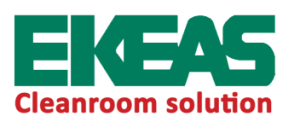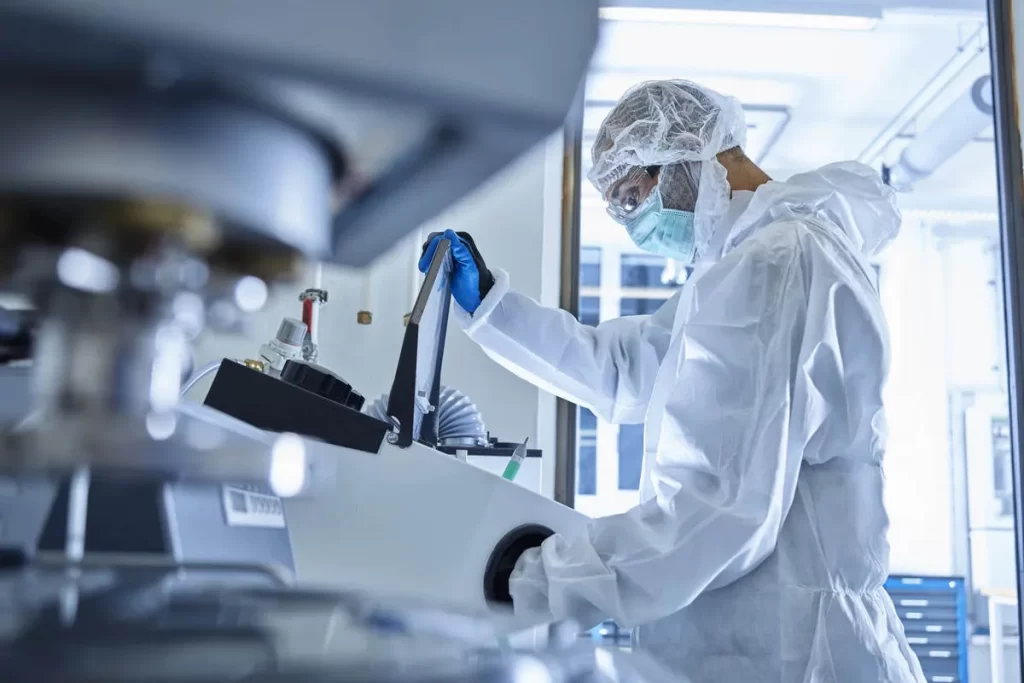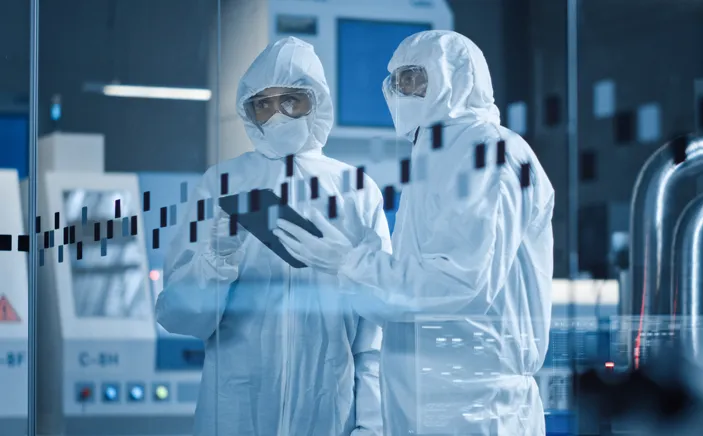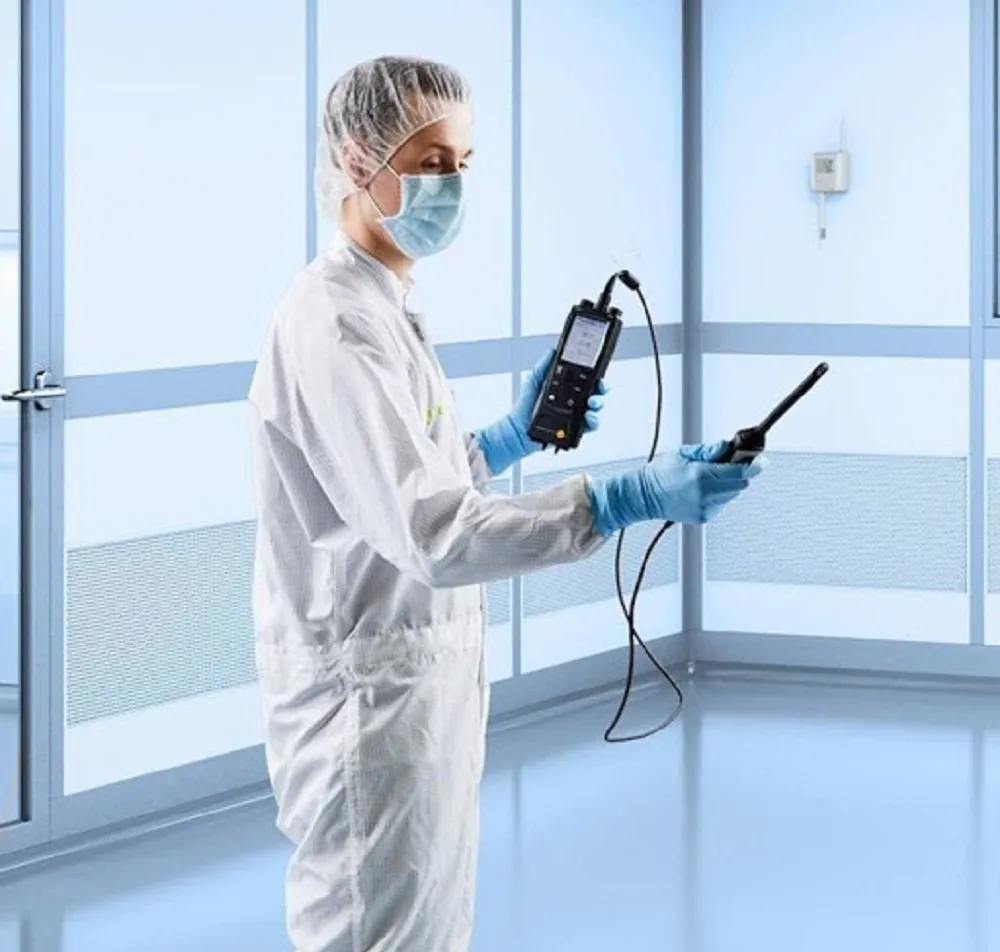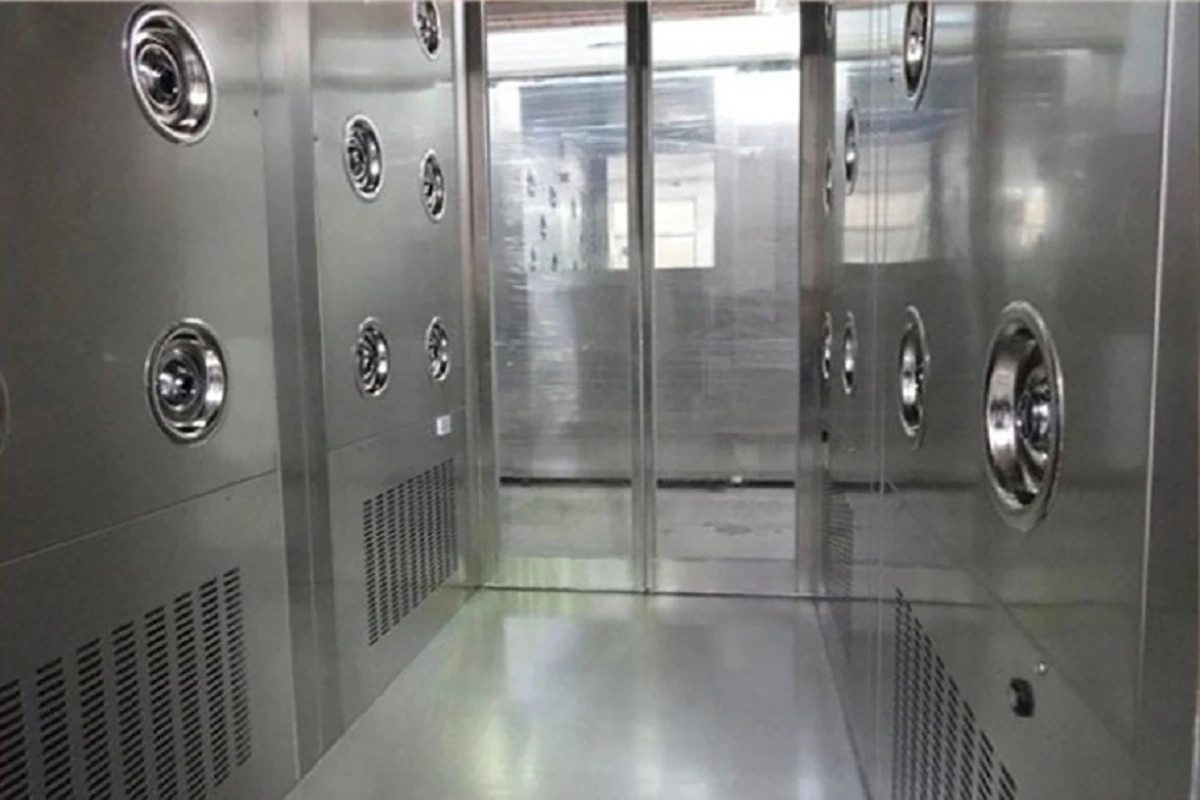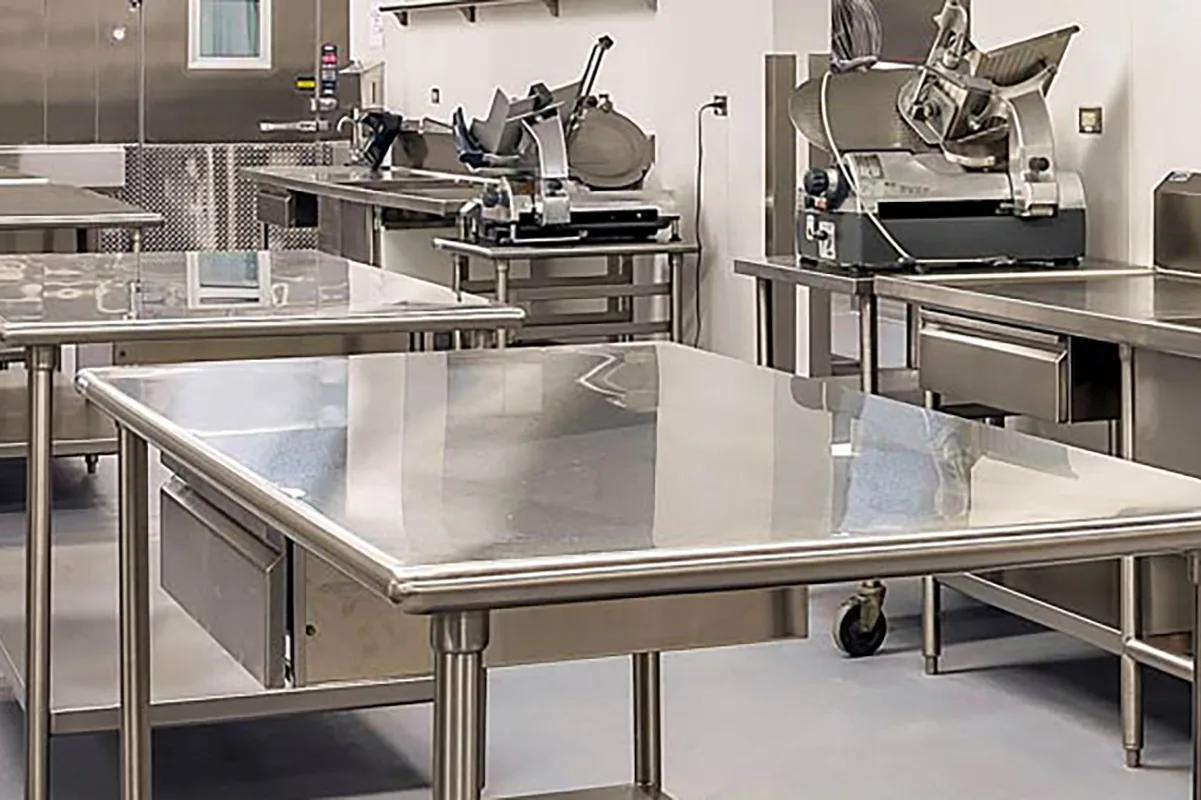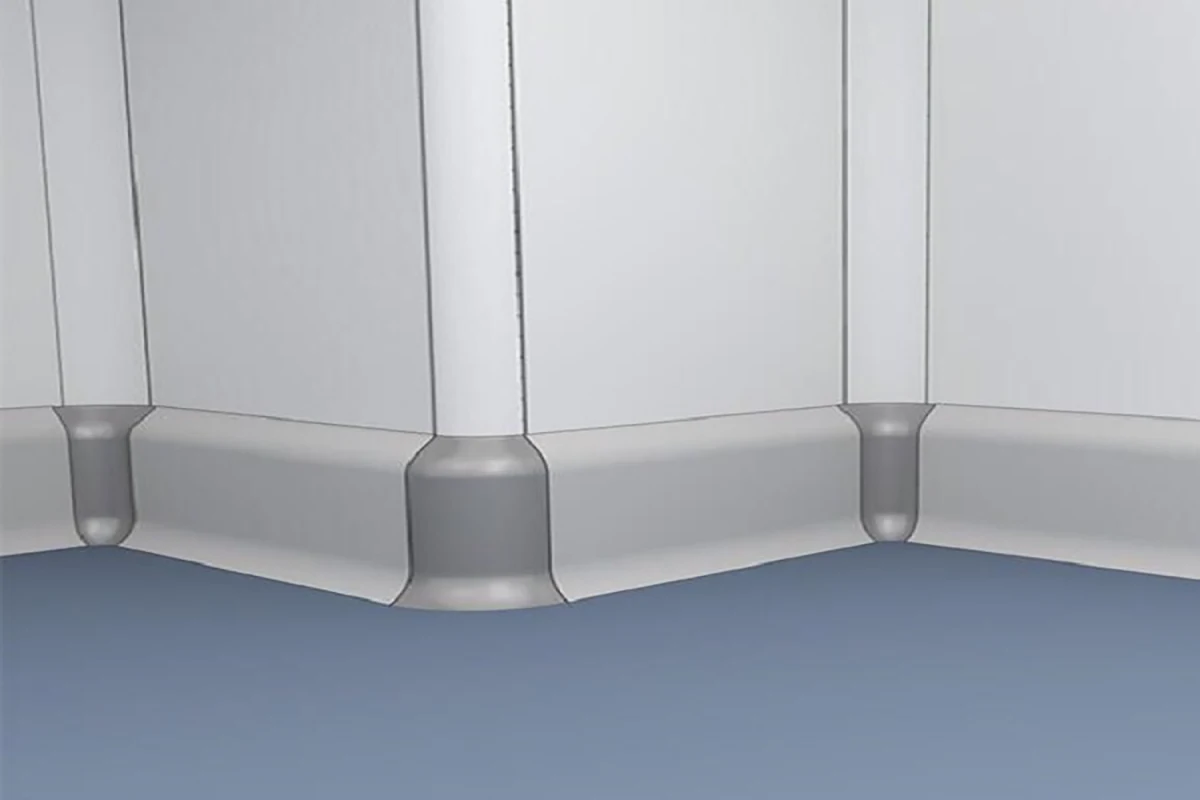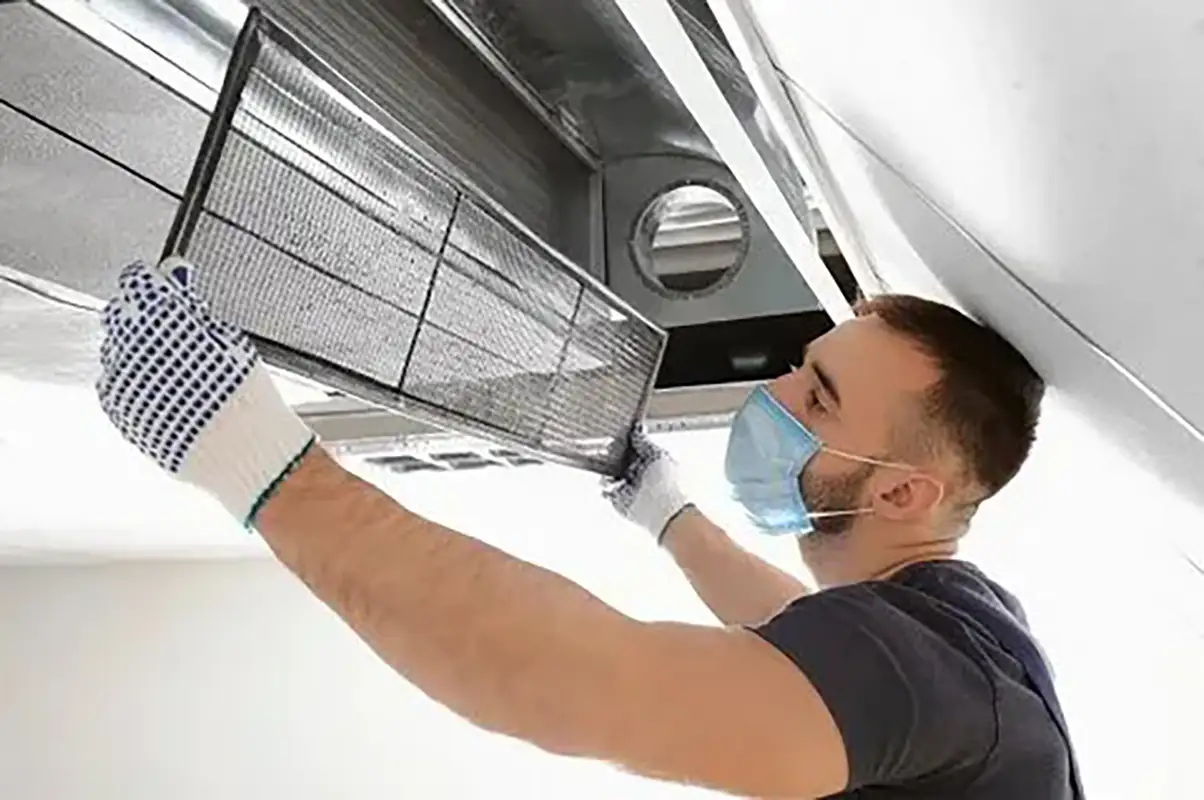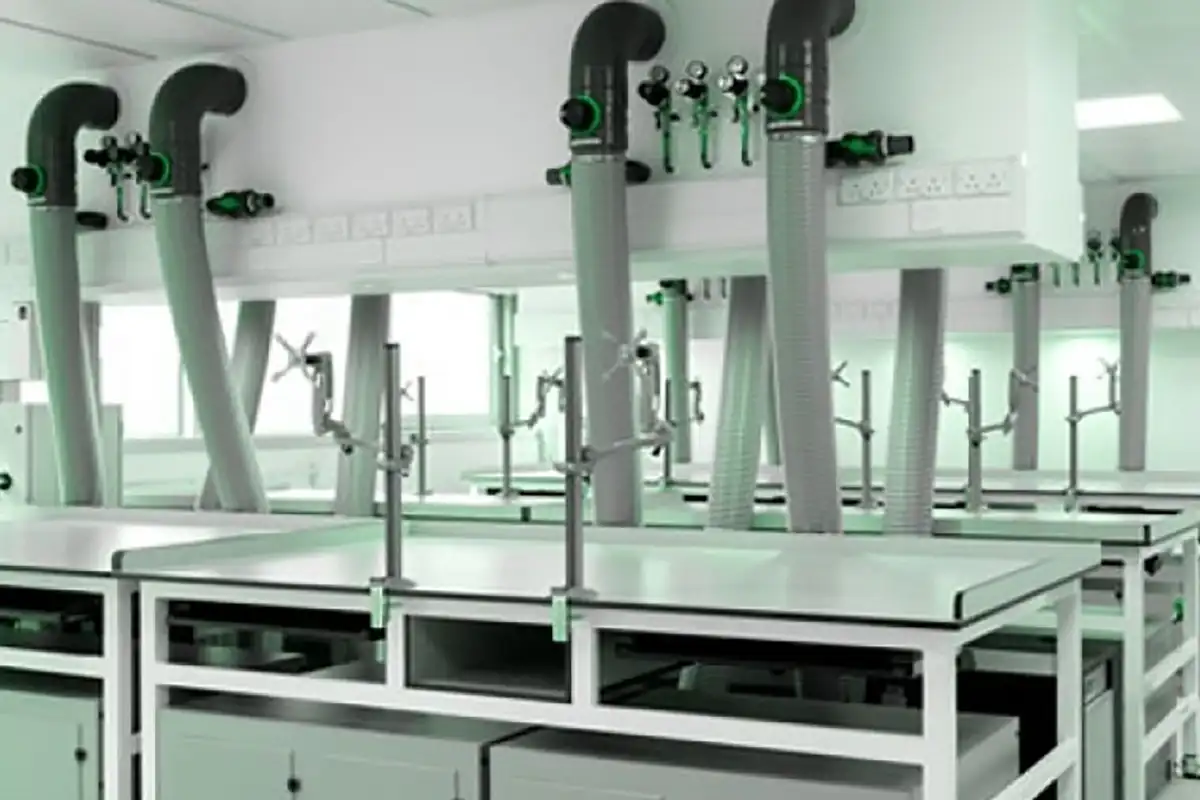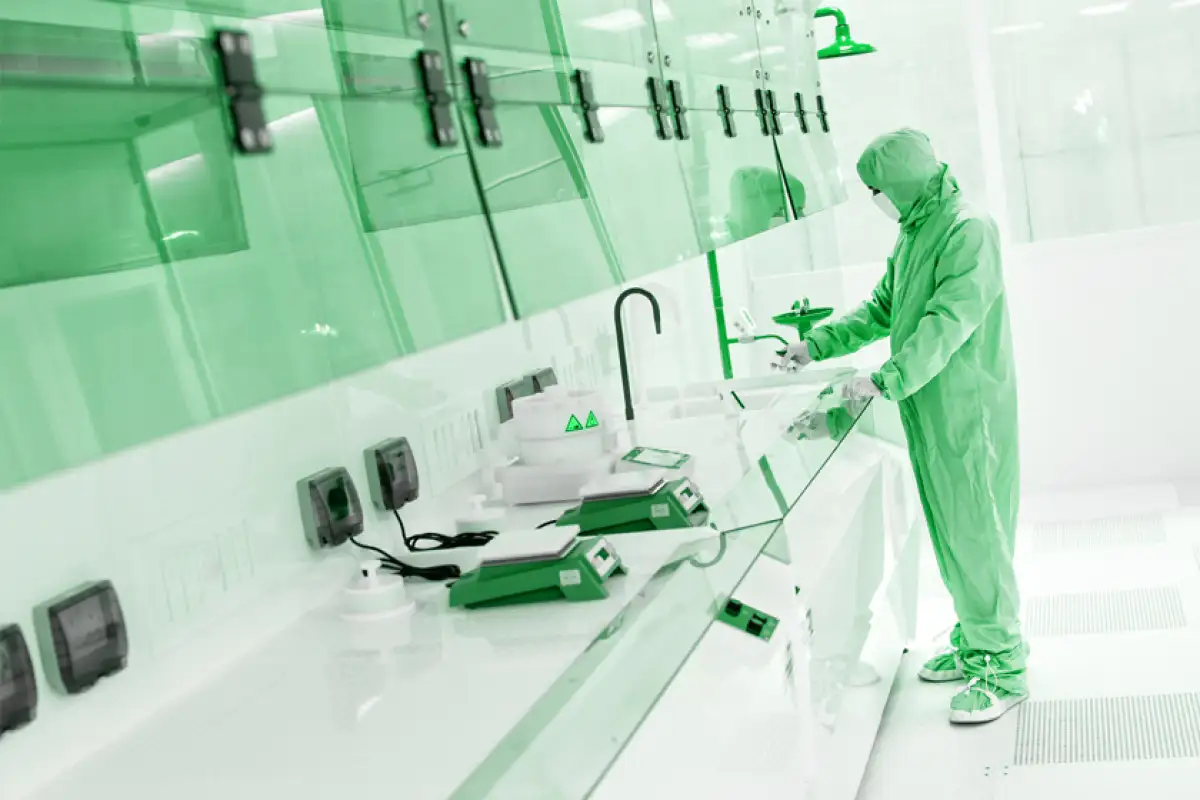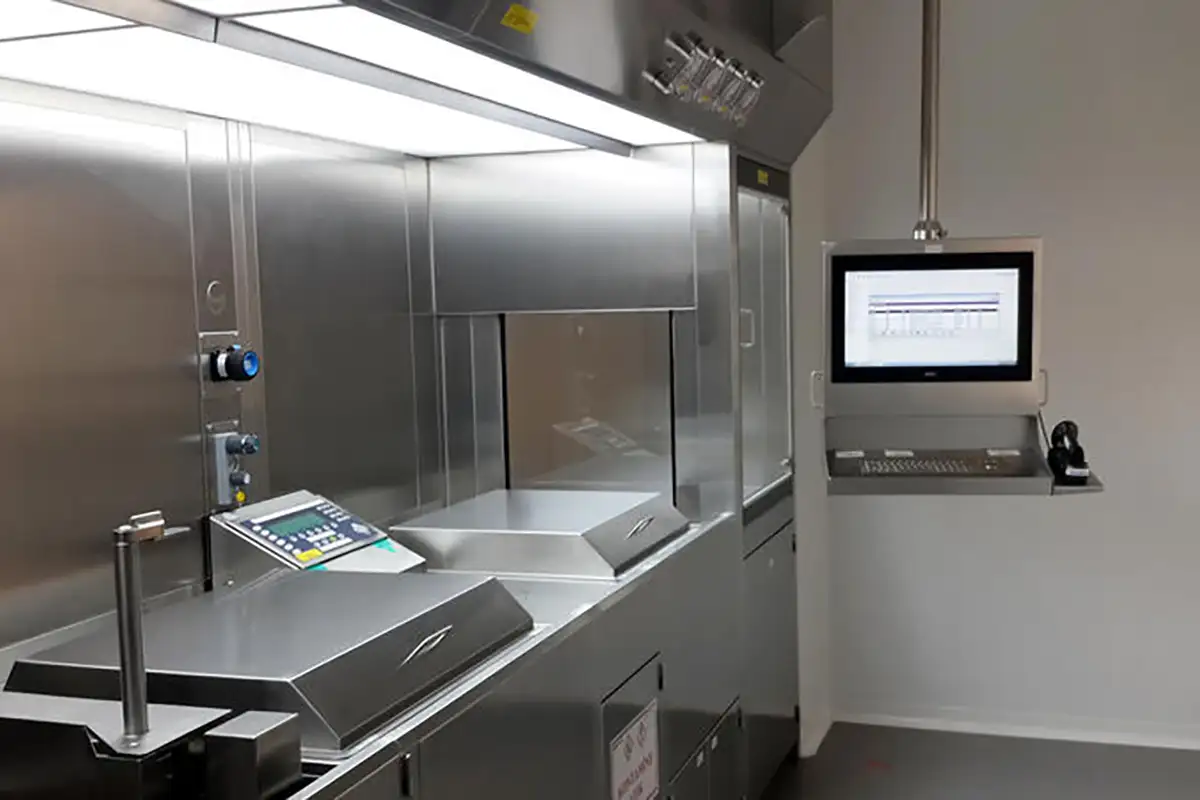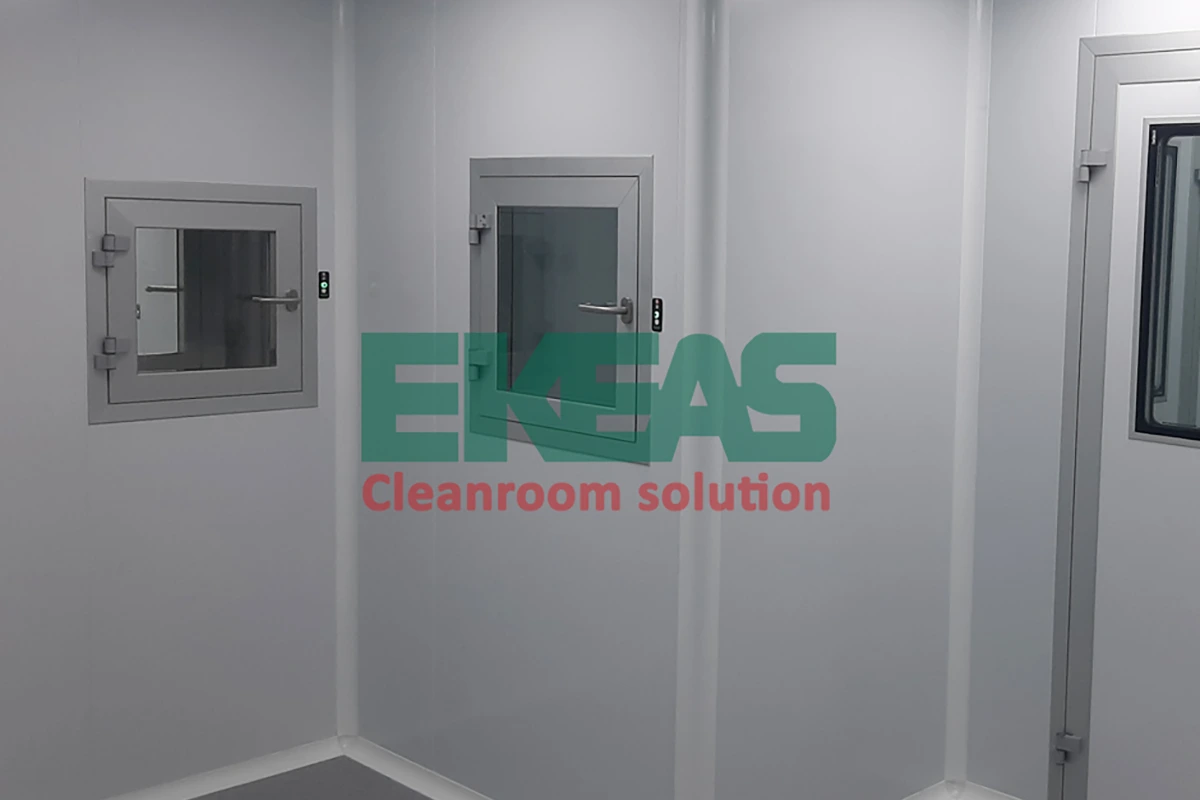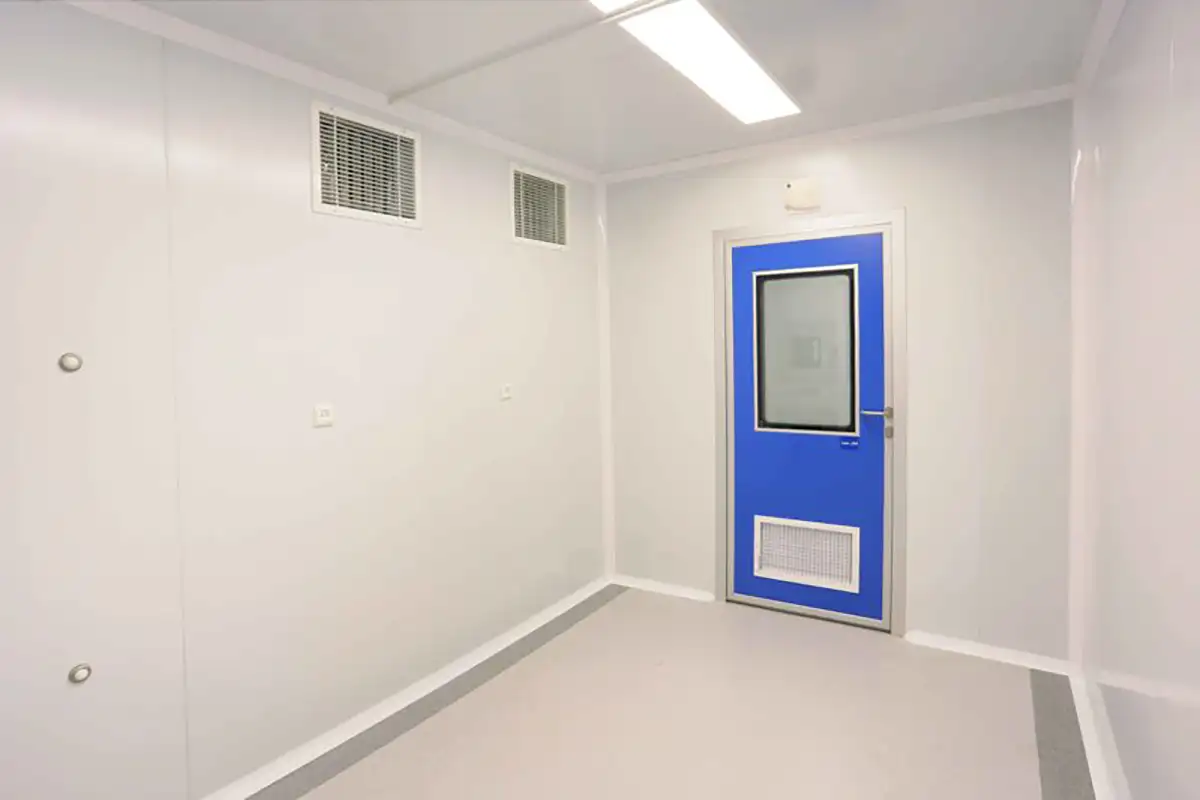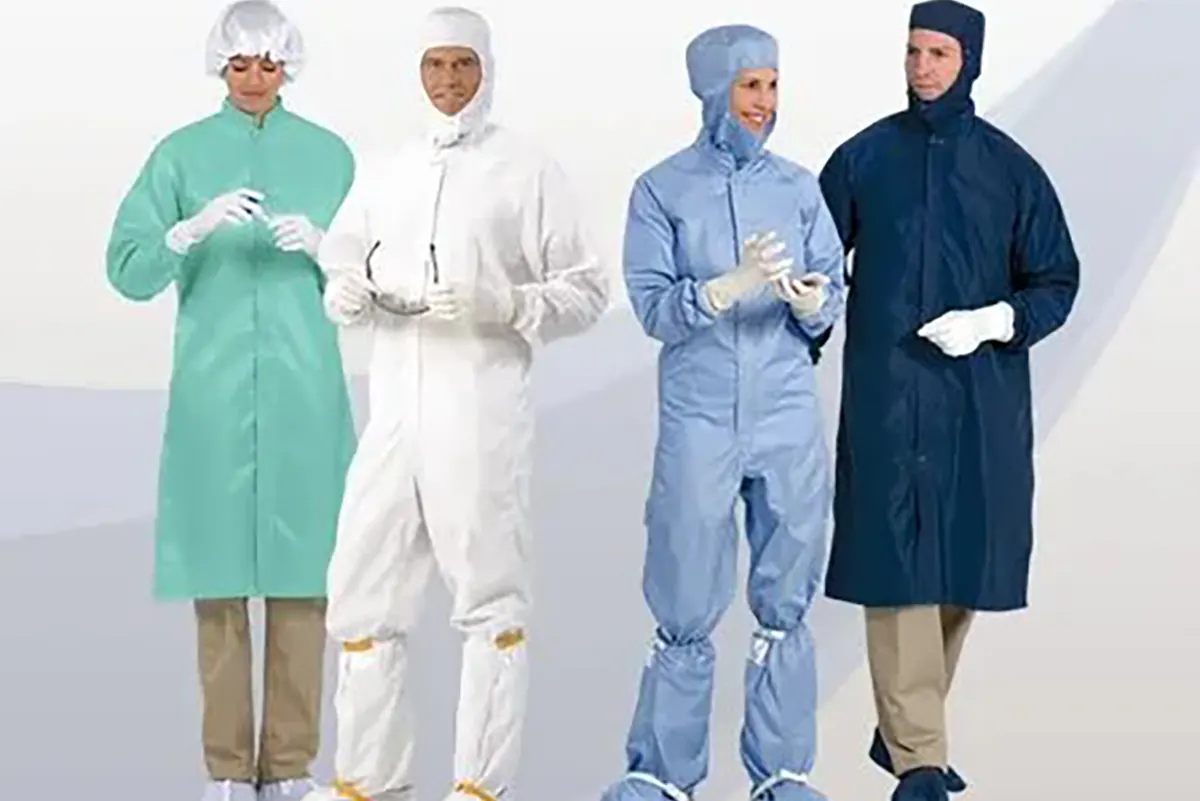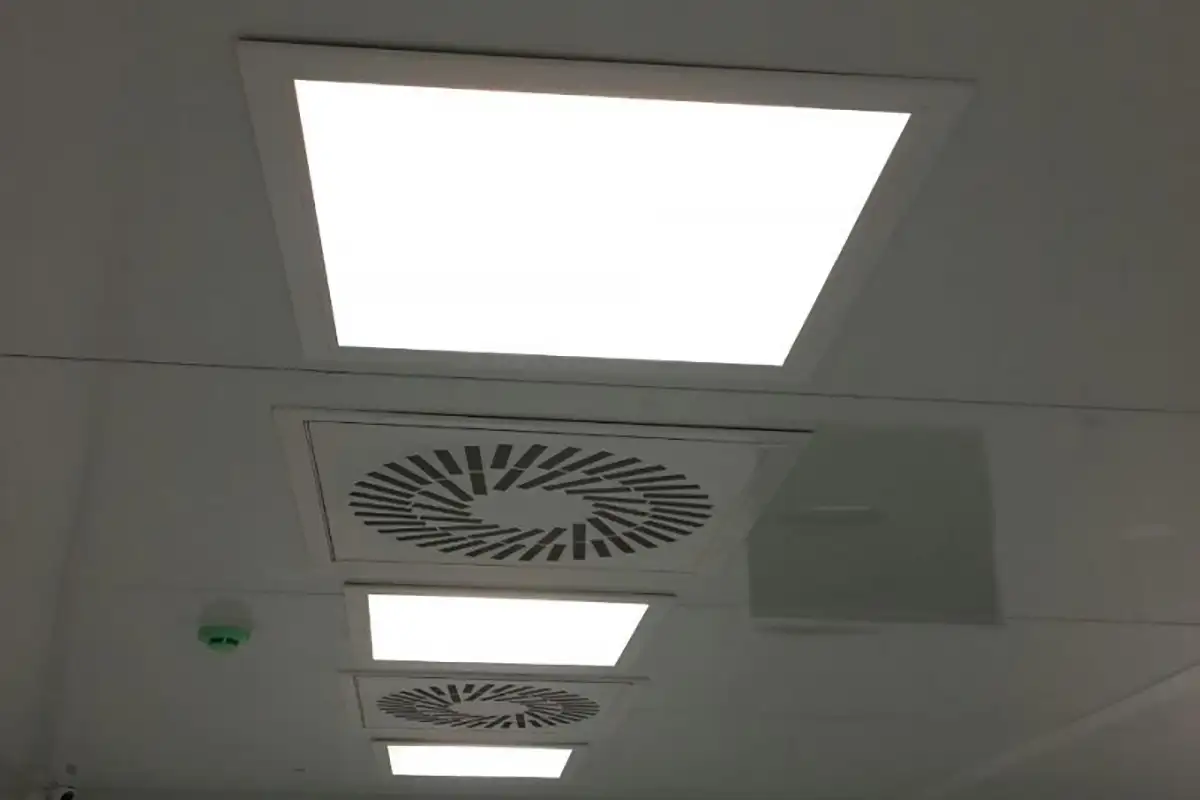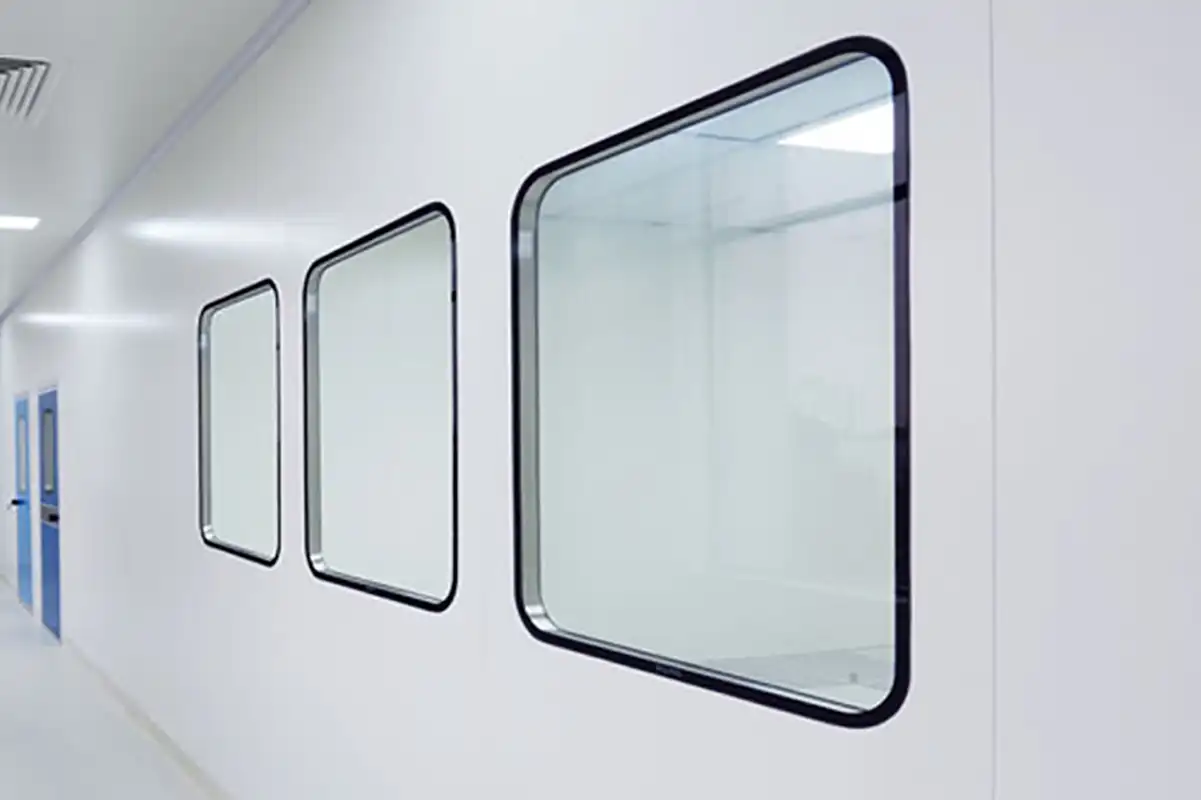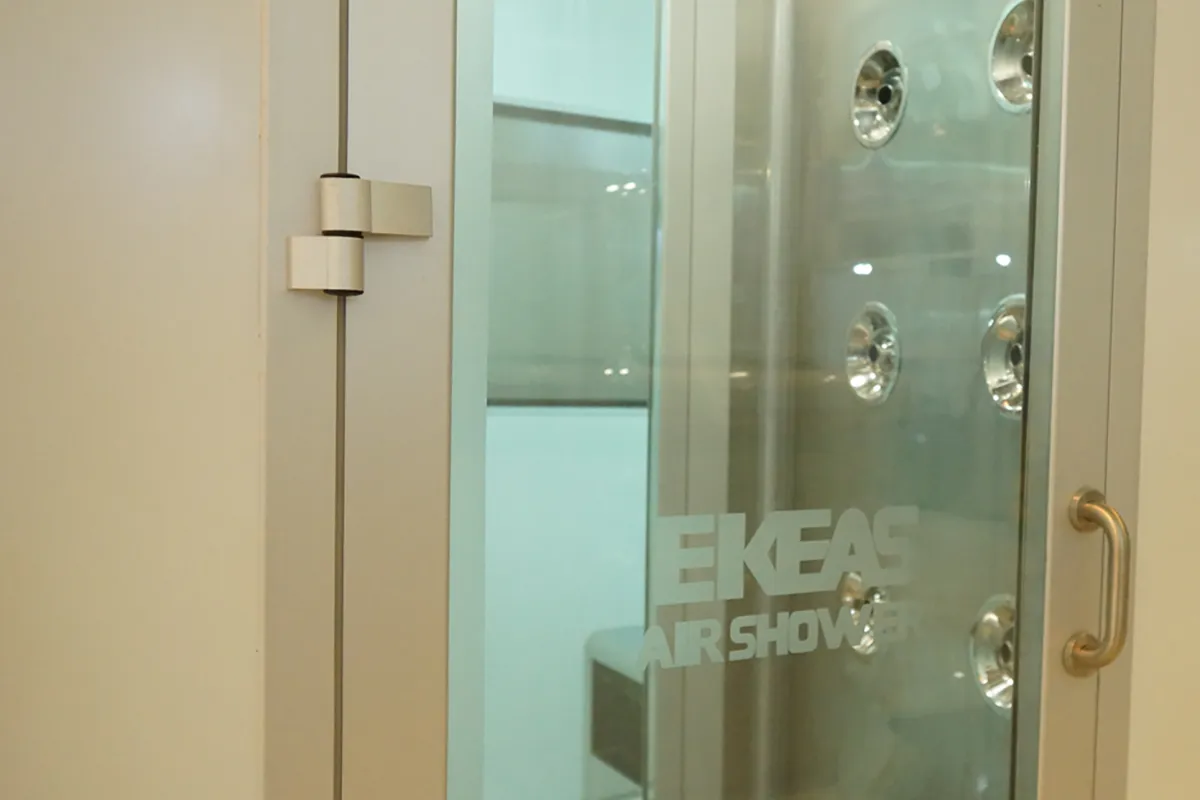Cleanroom particle counting test is a method for measuring the number and size of particles suspended in the air. The test is typically performed using a particle counter that classifies particles based on their size.
The results of the cleanroom particle counting test can be used to evaluate the performance of the cleanroom. They can also be used to identify areas that may need improvement.
Cleanroom particle counting test is typically performed in three particle sizes:
- Large particles (>10 µm): These particles are typically visible to the naked eye and can be inhaled by humans.
- Medium particles (2.5-10 µm): These particles can be inhaled by the lungs and can cause health problems such as asthma.
- Small particles (<2.5 µm): These particles can penetrate deep into the lungs and can cause serious health problems such as heart disease and cancer.
The results of the cleanroom particle counting test are typically measured in terms of the number of particles per cubic meter. There are different cleanroom standards that specify the number of particles permitted in each cleanroom class.
For example, the ISO 14644-1 standard defines a Class 1 cleanroom as having 100 particles or fewer per cubic meter of air that is 0.5 µm or larger.
Cleanroom particle counting test is an important method for ensuring that the cleanroom is functioning properly. The test can be used to identify areas that may need improvement and can help to maintain the quality of products manufactured in the cleanroom.
read more | Cleanroom Validation
What is a particle counter?
A cleanroom particle counter is a device that measures the suspended particles in the air. These devices are used to monitor the air quality of cleanrooms. There are various types of cleanroom particle counters, but they all use a basic principle. A beam of light is directed into a small chamber that holds a sample of air. Particles present in the air block the light beam, and this allows the particle counter to measure the number of particles.
Particle counters in cleanrooms can typically measure particles in a variety of sizes. Measuring particles in cleanrooms is important because it can help to identify sources of contamination. For example, if a particle counter shows that there are a large number of particles of size 0.5 micrometers in the air, it may indicate that cleanroom workers are not wearing their protective clothing properly.
Particle counters in cleanrooms are important tools for ensuring the air quality of cleanrooms. By measuring the number and size of particles present in the air, these devices can help to identify and reduce air pollution.
Applications of Particle Counters
Here are some of the applications of particle counters in cleanrooms:
- Monitoring the air quality of cleanrooms
- Identifying sources of contamination
- Evaluating the performance of filtration systems
- Determining the need for maintenance
Particle counters in cleanrooms are essential tools for ensuring the air quality of cleanrooms. These devices help manufacturers of air-sensitive products to produce products of the highest quality.
Types of Cleanroom Particle Counters
There are a variety of cleanroom particle counters that can be used to measure the number and size of particles suspended in the air. Some of the most popular types include:
Cleanroom Optical Particle Counter (OPC)
A cleanroom optical particle counter (OPC) is a laboratory instrument that is used to measure the size and concentration of particles in air. OPCs are typically used to test cleanrooms, where precise control of particle contamination is important for maintaining product and process quality.
OPCs work by using light to measure particles. Light is directed from a light source towards a particle sample. The particles then scatter the light, and the amount of light scattering is related to the particle size and its position in the sample. OPCs use a detector to measure the amount of light scattering.
OPCs can measure particle sizes from a few nanometers to several micrometers. They can also measure particle concentration in a specific volume of air.
OPCs are valuable tools for testing cleanrooms. They can help to ensure that rooms are within the cleanroom class range.
Here are some of the benefits of using OPCs for cleanroom testing:
- Accurate: OPCs can measure particle size and concentration with high accuracy.
- Sensitive: OPCs can measure even very small particles.
- Versatile: OPCs can measure particle sizes from a few nanometers to several micrometers.
- Reliable: OPCs are reliable instruments that can be used for cleanroom testing.
OPCs are valuable tools for testing cleanrooms. They can help to ensure that rooms are within the cleanroom class range.
read more | Cleanroom Design
Cleanroom Condensation Particle Counter (CPC)
A condensation particle counter (CPC) is a device used to measure the number of particles in air. This is done by using a supersaturated gas stream to convert particles into larger droplets. The droplets are then counted by an electrical sensor.
CPCs are used in cleanrooms to ensure that air quality meets the required standards. Cleanrooms are environments where precise control is applied to environmental parameters such as temperature, humidity, and air contamination. This precise control is important to ensure the proper functioning of processes and products.
read more | Cleanroom Cleaning Equipment
CPCs can measure particles down to 2 nanometers in size. This means that they can identify very small particles that are not detectable by other measurement methods. This makes CPCs very useful for use in cleanrooms that require precise air contamination control.
CPCs are typically used manually or automatically. Manual sampling is used when it is necessary to measure the exact number of particles at a specific point in the cleanroom. Automatic sampling is used to measure air contamination continuously throughout the cleanroom.
CPCs are an important tool for ensuring air quality in cleanrooms. They can help manufacturers and users of products made in cleanrooms to ensure that their products meet the necessary standards.
Here are some of the benefits of using CPCs in cleanrooms:
- They can measure particles down to 2 nanometers in size.
- They can be used to accurately measure the number of particles in a specific point or throughout a cleanroom.
- They can be used manually or automatically.
CPCs are a valuable tool for ensuring air quality in cleanrooms.
Cleanroom Ionizing Particle Counter (ICP)
A cleanroom ionizing particle counter (ICP) is a device used to measure the concentration of particles in an environment. The device uses an electric field to ionize the particles and then measures the number of ions produced. The particle concentration is calculated by dividing the number of ions by the volume of the sample.
ICPs are used in a variety of applications, including cleanrooms. Cleanrooms are controlled environments designed for the production of contamination-sensitive products. ICPs can be used to measure the concentration of particles in the air, on surfaces, and on equipment in cleanrooms.
read more | What is a weighing or sampling room?
ICPs have many advantages in cleanrooms, including:
- High accuracy: ICPs can measure particle concentrations with very high accuracy.
- High sensitivity: ICPs can measure very small particles.
- Wide range of particle sizes: ICPs can measure a wide range of particle sizes.
ICPs also have some disadvantages, including:
- High cost: ICPs are relatively expensive instruments.
- Complexity: ICPs are relatively complex instruments that require training and maintenance.
Here are some tips for using ICPs in cleanrooms:
- Place the ICP in a location that will not disrupt the airflow of the cleanroom.
- Calibrate the ICP regularly to ensure that it is providing accurate results.
- Follow the manufacturer’s instructions for maintenance and cleaning of the ICP.
By following these tips, you can ensure that your ICP is working effectively in your cleanroom.
Here are some specific applications of ICPs in cleanrooms:
- Air quality monitoring: ICPs can be used to monitor air quality in cleanrooms. This can be used to ensure that the cleanroom is clean and safe to work in.
- Pollutant identification: ICPs can be used to identify pollutants present in cleanrooms. This can be used to help find and eliminate sources of contamination.
- Process control: ICPs can be used to control production processes in cleanrooms. This can be used to ensure that the processes are being performed correctly and the products meet specifications.
read more | Class D cleanroom
Each type of particle counter has its own strengths and weaknesses. OPCs are typically fast and accurate, but they are limited to measuring airborne particles in a specific range of sizes. CPCs can measure airborne particles in a wide range of sizes, but they are typically slower and more expensive than OPCs. ICPs can measure airborne particles much smaller than other types of counters, but they are typically more expensive and complex.
The choice of the right type of particle counter depends on a variety of factors, including the type of application, the sensitivity required, and the budget.
Here are some common applications of cleanroom particle counters:
- Air quality monitoring in cleanrooms
- Air pollution detection in industrial environments
- Control of pharmaceutical and food production
- Scientific research
Cleanroom particle counters are essential tools for ensuring air quality in a variety of applications. They can be used to ensure that processes are being performed correctly and the products meet specifications.
Cleanroom Equipment by Ekeas
Cleanrooms include a variety of equipment, and in order for a cleanroom to meet standards, it must use the appropriate equipment. Here are a few examples of cleanroom equipment:
